- Understanding Phytophthora
- Symptoms of Phytophthora infection
- Factors contributing to Phytophthora spread
- Managing Phytophthora
- What is Phytophthora
- Common Symptoms of Phytophthora Diseases
- Impact of Phytophthora on Agriculture and Horticulture
- Importance of Effective Phytophthora Management
- Impacts of Phytophthora
- 1. Crop Losses
- 2. Environmental Damage
- 3. Spread of Pathogens
- 4. Economic Impact
- 5. Threat to Food Security
- Conclusion
- Detection and Diagnosis
- Visual Inspection
- Sampling and Laboratory Testing
- Molecular Techniques
- Remote Sensing and Imaging
- Integrated Approach
- Early Detection Methods
- Visual Inspection
- Sampling and Testing
- Trap Crops
- Soil Sampling
- Phytophthora Monitoring Programs
- Diagnostic Techniques
- Traditional Diagnostic Methods
- Molecular Diagnostic Methods
- Prevention and Control
- 1. Crop rotation
- 2. Sanitation and hygiene
- 3. Good drainage
- 4. Resistant varieties
- 5. Chemical control
- 6. Biological control
- Cultural Practices
- Sanitation
- Disease-resistant Varieties
- Proper Irrigation Practices
- Crop Rotation
- Mulching
- Proper Plant Spacing
- Integrated Pest Management
- Chemical Control
- Fungicides
- Application Techniques
- Limitations and Precautions
- Biological Control
- 1. Introduction of antagonistic organisms
- 2. Development and use of biocontrol agents
- 3. Enhancing the population of natural enemies
- 4. Cultural practices that promote biocontrol
- 5. Integrated pest management
- “Question-Answer”
- What is Phytophthora and why is it important to combat it?
- What are some effective methods to combat Phytophthora?
- How can strict quarantine measures help in combating Phytophthora?
- What are resistant plant varieties and how do they combat Phytophthora?
- How can proper sanitation and hygiene practices help in combating Phytophthora?
- What are biological controls and how do they combat Phytophthora?
- How do fungicides help in combating Phytophthora?
- “Video” Phytophthora control (part 1)
Phytophthora is a devastating pathogen that affects a wide range of plants, causing significant damage to agricultural crops and natural ecosystems. It is responsible for numerous plant diseases, including late blight in potatoes and tomatoes, sudden oak death in forests, and root rot in many ornamental plants. The impact of Phytophthora can be particularly severe, resulting in substantial economic losses and ecological disruption.
To combat the spread of Phytophthora and protect crops and plants from its devastating effects, various effective methods have been developed and implemented. These strategies focus on prevention, early detection, and control of the pathogen, aiming to minimize its impact and preserve the health and productivity of plants.
One of the most effective methods to combat Phytophthora is the use of resistant plant varieties. Breeding programs have been successful in developing resistant strains of certain crop plants, such as potatoes and tomatoes, that are less susceptible to Phytophthora infections. By cultivating these resistant varieties, farmers can significantly reduce the risk of disease outbreaks and minimize the need for chemical interventions.
In addition to resistant varieties, cultural practices play a crucial role in controlling Phytophthora. These practices include proper sanitation, crop rotation, and irrigation management. By practicing good sanitation, farmers can limit the survival and spread of the pathogen, while crop rotation helps break the disease cycle and reduces the buildup of inoculum in the soil. Effective irrigation management, such as avoiding overwatering and providing proper drainage, helps create unfavorable conditions for Phytophthora growth and development.
Chemical control methods, such as the use of fungicides, can also be employed to combat Phytophthora. However, their effectiveness may vary depending on the specific pathogen and plant species. It is important to use fungicides in a targeted and responsible manner, following recommended application rates and timing, to minimize the potential negative impacts on the environment and human health. Integrated pest management (IPM) approaches, which combine different control methods, including biological control agents, can provide a more sustainable and holistic approach to combat Phytophthora.
Understanding Phytophthora
Phytophthora is a type of water mold that belongs to the oomycetes group of organisms. It is an opportunistic pathogen that affects a wide range of plant species, including many economically important crops. Phytophthora is responsible for causing diseases such as late blight in potatoes and tomatoes, sudden oak death in trees, and root rot in various horticultural plants.
Phytophthora thrives in moist environments and can spread rapidly through water or infected plant material. It produces spores that are easily carried by wind, water, or soil, allowing it to move and infect new hosts. The spores can survive in the soil for several years, making it difficult to control and eradicate the pathogen.
Symptoms of Phytophthora infection
Phytophthora infection can have various symptoms depending on the host plant. Common symptoms include leaf and stem blight, wilting, root rot, and fruit rot. Infected plants may develop dark lesions or cankers on the stems, and the leaves may exhibit yellowing, browning, or necrosis.
One characteristic symptom of Phytophthora infection is the presence of white, cottony mycelium in the infected tissues and a distinct, musty smell. This mycelium is responsible for the breakdown of plant tissues and the spread of the pathogen.
Factors contributing to Phytophthora spread
- Moisture: Phytophthora thrives in moist environments and the presence of standing water or excessive irrigation can create ideal conditions for its growth and spread.
- Infected plant material: Plant debris or infected plant material left in the field can serve as a source of infection for new plants.
- Soil compaction: Compacted soil can prevent proper drainage, leading to waterlogging and favoring the development of Phytophthora.
- Improper cultural practices: Overcrowding of plants, inadequate spacing, and excessive use of fertilizers can weaken plants and make them more susceptible to Phytophthora infection.
Managing Phytophthora
Effective management of Phytophthora involves implementing multiple strategies that target different stages of the pathogen’s lifecycle. Some common management practices include:
- Sanitation: Removing and destroying infected plants, plant debris, and weed hosts can help reduce the source of inoculum.
- Proper irrigation: Avoid excessive irrigation and ensure proper drainage to prevent waterlogged conditions that favor Phytophthora growth.
- Crop rotation: Rotating susceptible crops with non-host plants can help break the disease cycle and reduce pathogen populations in the soil.
- Resistant varieties: Using plant varieties with resistance or tolerance to Phytophthora can help minimize the impact of the disease.
- Chemical control: Fungicides can be used as part of an integrated management strategy to protect plants from Phytophthora infection.
| Advantages | Disadvantages |
|---|---|
| Can be applied preventively to protect plants | May require multiple applications |
| Effective against certain Phytophthora species | Potential environmental impacts |
| Readily available and easy to apply | Possible development of resistant strains |
Implementing a combination of these strategies can help reduce the impact of Phytophthora on crops and minimize the risk of its spread. Regular monitoring, early detection, and prompt action are also crucial in managing Phytophthora effectively.
What is Phytophthora
Phytophthora is a genus of plant pathogens that belong to the kingdom Stramenopila and the class Oomycetes. They are microscopic organisms that can cause devastating diseases in a wide range of plants, including crops, ornamentals, and trees. Phytophthora species are known for their ability to infect plant roots, stems, leaves, and fruits, leading to severe damage and significant economic losses in agriculture and horticulture.
Phytophthora species are generally categorized as soil-borne pathogens, meaning that they reside in the soil and are capable of surviving for extended periods in plant debris or as spores. They can infect plants through direct contact with plant tissues or through means of water movement, such as rainfall or irrigation. Once inside the plant, Phytophthora pathogens produce specialized structures called hyphae, which allow them to invade and colonize plant tissues, leading to disease development.
Common Symptoms of Phytophthora Diseases
Phytophthora diseases can manifest in various ways, depending on the host plant and the specific Phytophthora species involved. Some common symptoms include:
- Wilting or yellowing of leaves
- Root rot or decay
- Cankers or lesions on stems or branches
- Soft, water-soaked areas on fruit or foliage
- Stunted growth or poor plant vigor
The severity of the symptoms can vary, ranging from mild to severe, and can ultimately lead to plant death if left untreated.
Impact of Phytophthora on Agriculture and Horticulture
The impact of Phytophthora diseases on agriculture and horticulture is significant. These pathogens can infect a wide range of economically important plants, including staple food crops, such as potatoes, tomatoes, and soybeans, as well as high-value crops, such as grapes, citrus fruits, and ornamental plants. The diseases caused by Phytophthora can result in yield losses, reduced crop quality, and increased production costs due to the need for disease management strategies.
Furthermore, Phytophthora pathogens have the ability to produce highly resilient spores that can persist in the soil or water sources, making disease control challenging. They can also adapt and evolve rapidly, leading to the emergence of new pathogen strains with increased virulence or resistance to fungicides.
Importance of Effective Phytophthora Management
Given the significant impact of Phytophthora diseases, the implementation of effective management strategies is crucial for minimizing their impact on agricultural and horticultural systems. Integrated disease management approaches, including cultural practices, genetic resistance, and the use of fungicides, are commonly employed to combat Phytophthora. These strategies aim to prevent or reduce disease occurrence, limit disease spread, and protect plants from infection.
Phytosanitary measures, such as the use of certified disease-free plant material and soil sterilization, can help prevent the introduction and spread of Phytophthora diseases into new areas. Implementing proper sanitation practices, such as removing and destroying infected plants or plant debris, can also help mitigate disease spread.
In conclusion, Phytophthora is a group of devastating plant pathogens that can cause severe damage to a wide range of crops, ornamentals, and trees. Understanding the biology and behavior of Phytophthora species is essential for developing effective management strategies to combat these diseases and protect plant health.
Impacts of Phytophthora
Phytophthora is a genus of plant pathogenic oomycetes that can cause severe damage to a wide range of plant species, including both agricultural crops and natural ecosystems. The impacts of Phytophthora are diverse and can have significant economic and environmental consequences.
1. Crop Losses
- Phytophthora infections can lead to significant crop losses, particularly in susceptible plant species.
- The pathogens can infect the roots, stems, leaves, and fruits of plants, causing wilting, necrosis, rotting, and ultimately, reduced yield or complete crop failure.
- This can result in financial losses for farmers and reduced food availability for the population.
2. Environmental Damage
- Phytophthora pathogens can negatively impact natural ecosystems by infecting and killing native plant species.
- This can disrupt the balance of ecosystems and lead to the loss of biodiversity.
- Infected plants can serve as a reservoir for Phytophthora spores, allowing the pathogen to spread to new areas and infect additional plant populations.
3. Spread of Pathogens
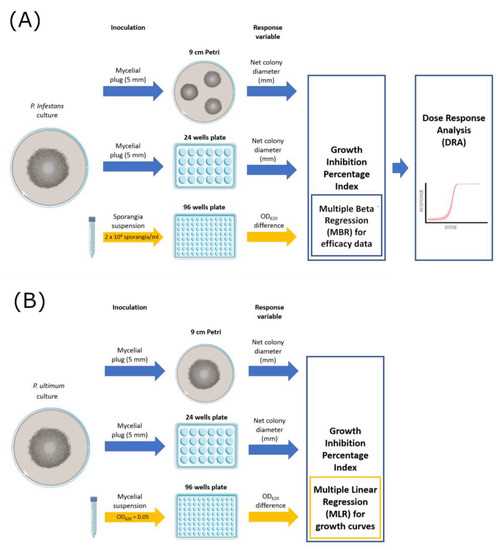
- Phytophthora pathogens can spread rapidly through water, soil, and contaminated plant material.
- Once established, they can persist in the environment for long periods, making management and control challenging.
- The movement of infected plant material, such as nursery plants or agricultural products, can contribute to the introduction and spread of Phytophthora to new areas.
4. Economic Impact
- The economic impact of Phytophthora is significant, with costs associated with losses in crop production, disease management, and control measures.
- Efforts to prevent and control Phytophthora outbreaks often require the implementation of costly phytosanitary measures, quarantine regulations, and research and development of resistant plant varieties.
5. Threat to Food Security
- Phytophthora can pose a significant threat to global food security, especially in regions where agriculture is a critical component of the economy and sustenance.
- The pathogens can affect staple food crops, such as potatoes or tomatoes, leading to decreased production and potential food shortages.
- The loss of crops due to Phytophthora can exacerbate existing food insecurity and have long-lasting consequences for affected communities.
Conclusion
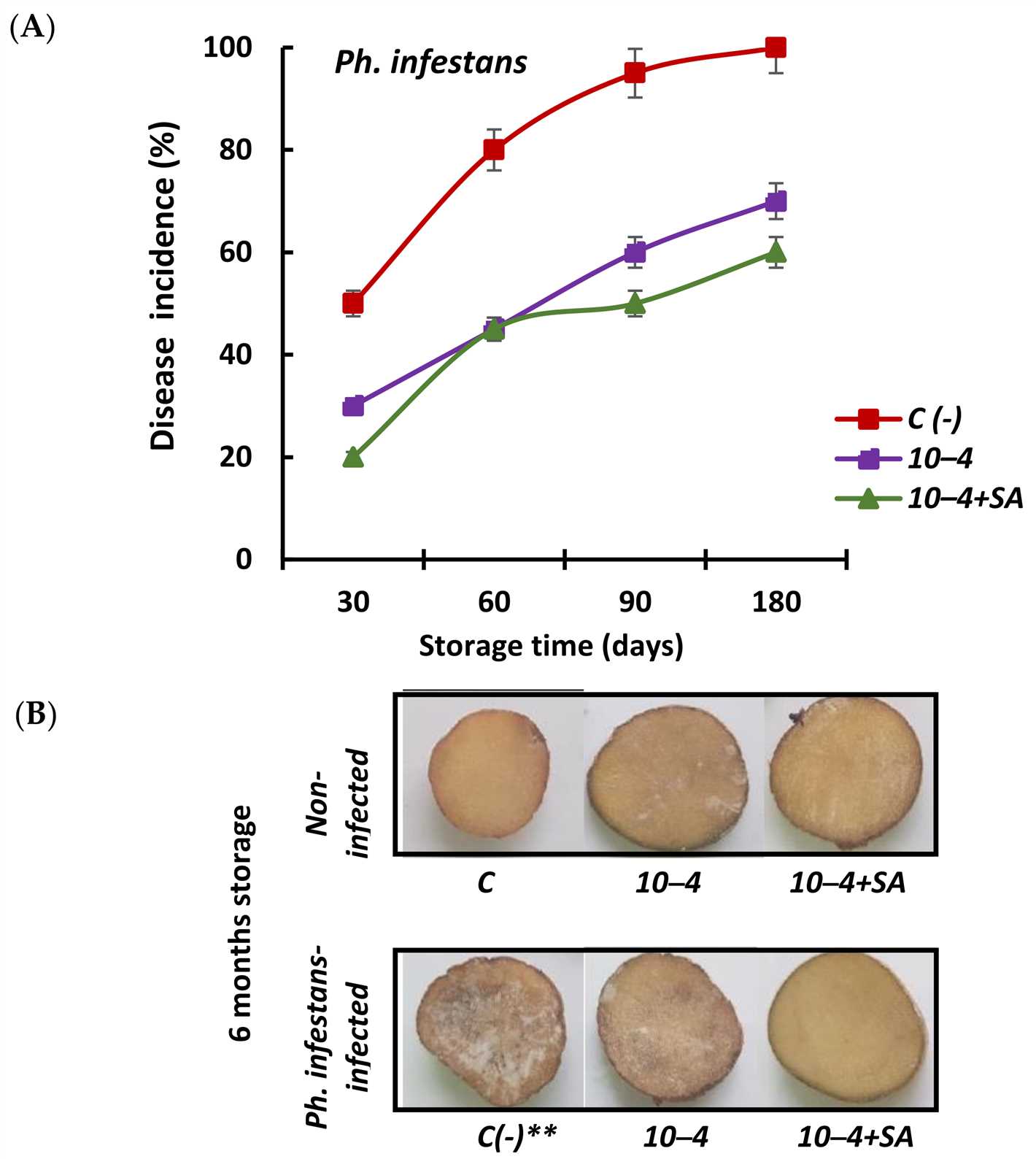
The impacts of Phytophthora on agriculture, natural ecosystems, and food security are substantial. Efforts to combat Phytophthora must incorporate a multi-faceted approach, including prevention, early detection, and effective management strategies to minimize its negative impacts and protect plant health, economic stability, and environmental sustainability.
Detection and Diagnosis
Early detection and accurate diagnosis of phytophthora infections are crucial for effective management and control. There are several methods available for detecting and diagnosing phytophthora, ranging from visual inspections to advanced molecular techniques.
Visual Inspection
Visual inspection is the most basic method of detecting phytophthora infections. It involves assessing the overall health and appearance of plants and looking for typical symptoms such as wilting, yellowing or browning leaves, root rot, and cankers. However, visual inspection alone may not be conclusive, as the symptoms of phytophthora can be similar to those caused by other plant pathogens or environmental stresses.
Sampling and Laboratory Testing
In order to confirm the presence of phytophthora, plant samples can be collected and sent to a laboratory for testing. The laboratory can conduct various tests, including isolation of the pathogen from the plant tissue, culturing on selective media, and identification using microscopy and DNA-based techniques. These tests allow for a more accurate diagnosis of phytophthora infections and can help determine the specific species or strain present.
Molecular Techniques
Molecular techniques, such as polymerase chain reaction (PCR), have revolutionized the detection and diagnosis of phytophthora. PCR allows for the amplification and identification of specific DNA sequences that are unique to phytophthora species. This method is highly sensitive and specific, providing rapid and accurate results even at low pathogen levels. It can be used to detect phytophthora in various plant tissues, soil samples, and water sources.
Remote Sensing and Imaging
Remote sensing and imaging technologies, such as hyperspectral imaging and infrared thermography, are being explored as potential tools for detecting phytophthora infections. These techniques can detect subtle changes in plant physiology and temperature that may indicate the presence of the pathogen. While still in the early stages of development, remote sensing and imaging hold promise for non-destructive and large-scale detection of phytophthora.
Integrated Approach
Combining multiple detection methods and techniques can increase the accuracy and reliability of phytophthora diagnosis. An integrated approach that includes visual inspection, laboratory testing, and molecular techniques can provide a comprehensive assessment of the pathogen’s presence and spread in a given area. This knowledge is essential for implementing effective management and control strategies to combat phytophthora.
| Method | Advantages | Disadvantages |
|---|---|---|
| Visual Inspection | Simple and inexpensive | Subjective and may not be conclusive |
| Laboratory Testing | Provides accurate diagnosis and identification | Time-consuming and requires specialized equipment |
| Molecular Techniques | Highly sensitive and specific | Expensive and requires molecular biology expertise |
| Remote Sensing and Imaging | Potential for non-destructive and large-scale detection | Still in early stages of development |
In conclusion, detection and diagnosis of phytophthora are essential for effective management and control. A combination of visual inspection, laboratory testing, molecular techniques, and emerging technologies can provide accurate and timely information on the presence and spread of phytophthora, enabling proactive measures to be taken to combat this destructive pathogen.
Early Detection Methods
Early detection of Phytophthora diseases is crucial in order to initiate effective management strategies and prevent the spread of the pathogen. There are several methods available for early detection of Phytophthora, including:
Visual Inspection
Visual inspection involves regular monitoring of plants for any visible symptoms of Phytophthora infection. Common symptoms include wilting, yellowing or browning of leaves, stunted growth, and root rot. Inspecting both above-ground and below-ground parts of the plant can help identify early signs of infection.
Sampling and Testing
Sampling and testing plant tissues is an effective way to detect the presence of Phytophthora. This can be done by collecting samples from potential host plants and sending them to a laboratory for testing. Techniques such as isolation on selective media, PCR, and ELISA can be used to detect the presence of the pathogen.
Trap Crops
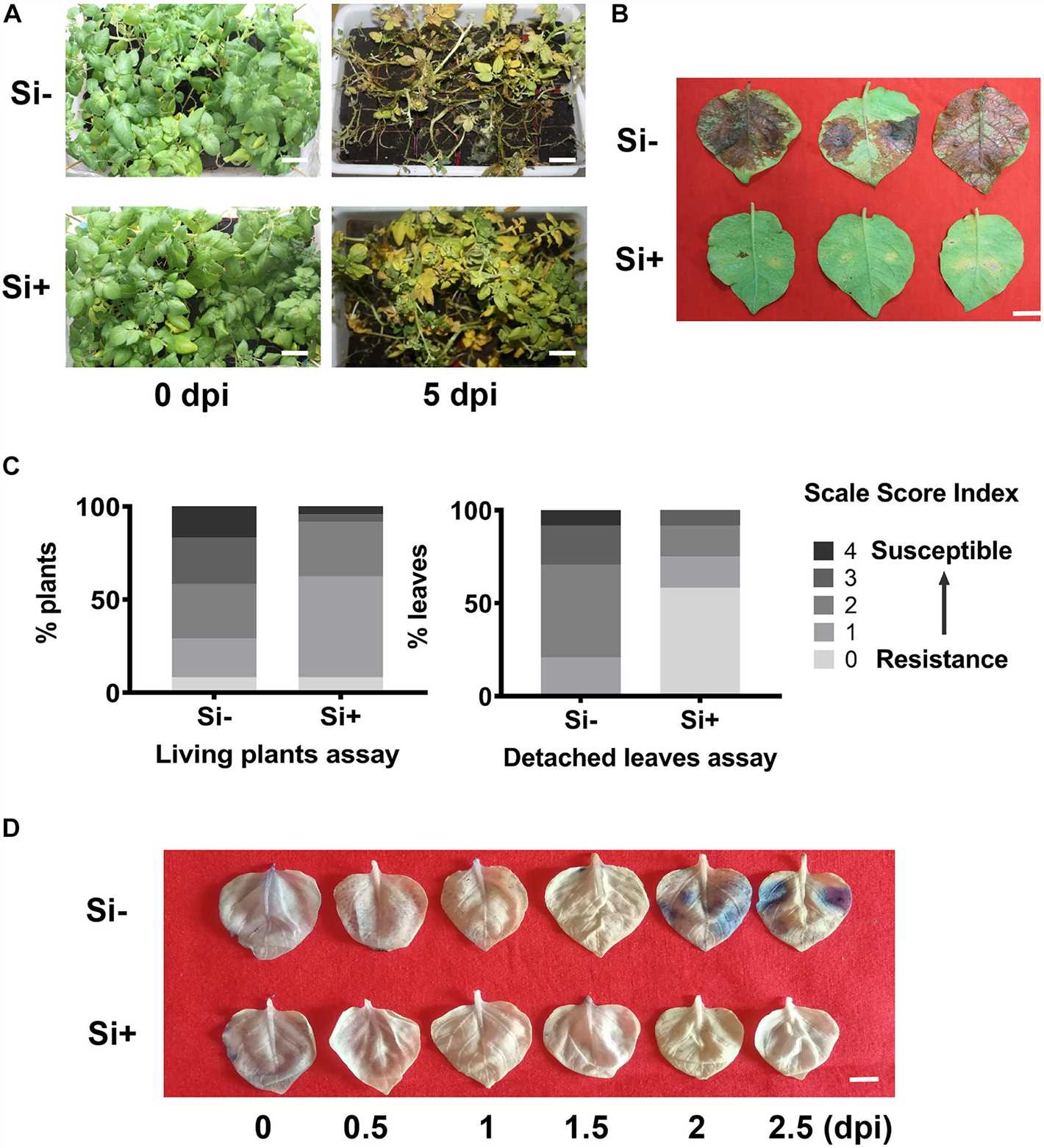
Trap crops are specially chosen plants that are highly susceptible to Phytophthora and serve as early detection tools. By planting trap crops near vulnerable areas, such as nurseries or crop fields, any infection in the trap crops can signal the presence of Phytophthora and initiate management strategies.
Soil Sampling
Phytophthora can survive in the soil for extended periods of time and infect plants when conditions are favorable. Soil sampling involves collecting soil samples from potentially infected areas and testing them for the presence of Phytophthora. Techniques such as baiting with susceptible plants or using soil DNA extraction and PCR can be employed for soil testing.
Phytophthora Monitoring Programs
Phytophthora monitoring programs involve regular surveillance of plants in high-risk areas, such as nurseries or areas with a history of Phytophthora outbreaks. These programs can include visual inspections, sampling and testing, and collaboration with local growers and researchers to detect and manage Phytophthora at an early stage.
By implementing early detection methods, growers and researchers can identify Phytophthora infections early on and implement appropriate management strategies to prevent further spread and minimize crop losses.
Diagnostic Techniques
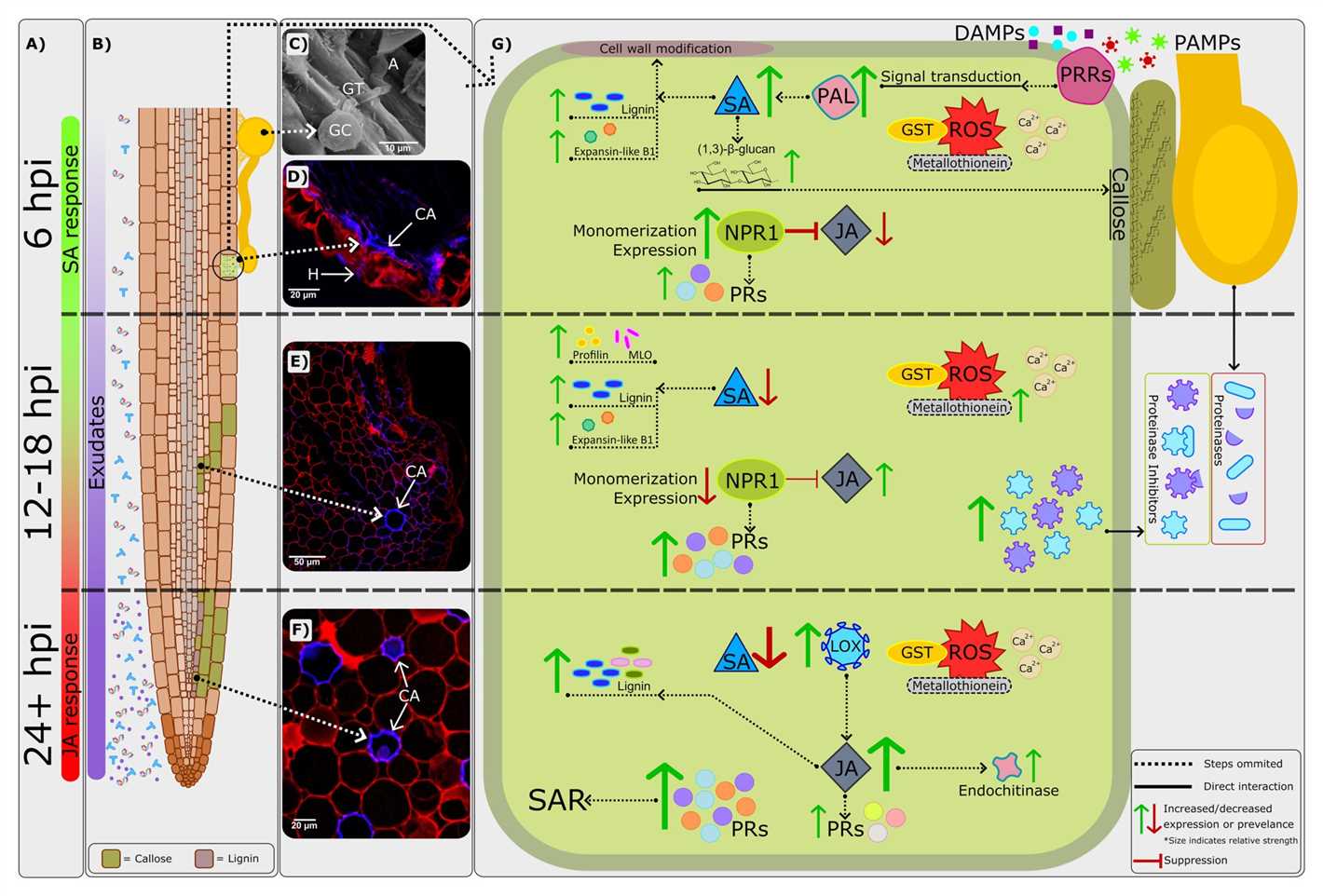
The accurate and timely diagnosis of Phytophthora infections is crucial for their effective management and control. Various diagnostic techniques are available to detect the presence of Phytophthora and identify the specific species or pathotype causing the infection. These techniques may be classified into two main categories: traditional and molecular diagnostic methods.
Traditional Diagnostic Methods
1. Visual Symptoms: In many cases, the presence of Phytophthora can be visually identified by the characteristic symptoms it causes in infected plants. These symptoms may include wilting, root rot, leaf spotting, and stem cankers. However, visual symptoms alone are not always reliable for accurate diagnosis, as they can be similar to those caused by other pathogens or abiotic factors.
2. Isolation and Culture: The isolation and culture of Phytophthora from infected plant tissues is a commonly used diagnostic technique. This method involves taking a small sample of the infected tissue, surface sterilizing it, and placing it on a selective medium that promotes the growth of Phytophthora. The presence of the pathogen can be confirmed by observing the typical colony morphology and conducting additional tests.
3. Microscopic Examination: Microscopic examination of infected plant tissues or pathogen structures can also help in the diagnosis of Phytophthora. Specific stains can be used to enhance the visibility of the pathogen structures, such as sporangia, oospores, and hyphae. The size, shape, and arrangement of these structures can provide valuable information for identification.
Molecular Diagnostic Methods
1. Polymerase Chain Reaction (PCR): PCR is a highly sensitive and specific molecular technique used for the detection and identification of Phytophthora. This method involves amplifying specific regions of the pathogen’s DNA using specific primers. The amplified DNA can be analyzed using gel electrophoresis or other molecular methods to determine the presence and identity of the pathogen.
2. DNA Sequencing: DNA sequencing can be used to confirm the identity of Phytophthora species or pathotypes. This technique involves determining the order of nucleotides in a segment of the pathogen’s DNA. The obtained sequence can be compared with a database of known sequences to identify the specific species or pathotype causing the infection.
3. Loop-mediated isothermal amplification (LAMP): LAMP is a rapid and highly sensitive molecular method used for the detection of Phytophthora. This technique amplifies the target DNA under isothermal conditions, eliminating the need for a thermal cycler. The amplified DNA can be visualized using a colorimetric assay or real-time monitoring.
Both traditional and molecular diagnostic methods have their advantages and limitations. Combining multiple techniques can increase the accuracy and reliability of the diagnostic results. Rapid and accurate diagnosis is essential for implementing effective management strategies and preventing the spread of Phytophthora infections.
Prevention and Control
Preventing and controlling Phytophthora is crucial to protect crops and ensure their healthy growth. By implementing effective strategies, growers can minimize the risk of infection and limit the spread of the disease. Here are some proven methods for prevention and control:
1. Crop rotation
- Rotate crops regularly to avoid continuous planting of susceptible species in the same area.
- Consider the disease resistance of different crops when planning rotations.
- Allow sufficient time between rotations to break the disease cycle.
2. Sanitation and hygiene
- Remove and destroy infected plants and plant debris promptly.
- Disinfect tools and equipment after each use to prevent disease spread.
- Ensure clean irrigation water and avoid using water from infected sources.
3. Good drainage
- Improve soil drainage to reduce the risk of waterlogged conditions favoring Phytophthora development.
- Avoid excessive irrigation and minimize standing water in fields.
4. Resistant varieties
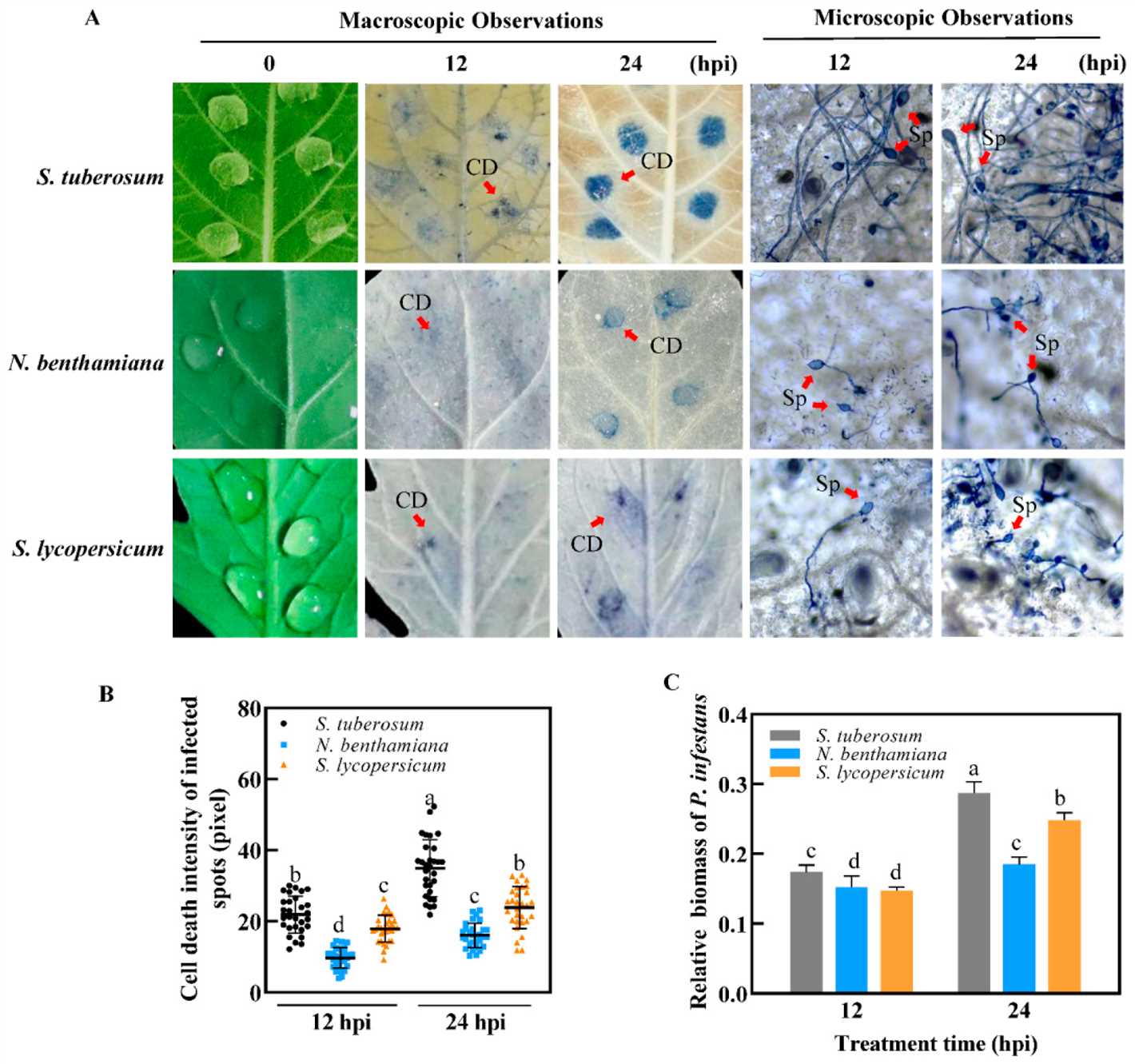
- Select and plant crop varieties with high resistance to Phytophthora.
- Consult with local agricultural experts or extension services for recommended resistant varieties.
5. Chemical control
- Apply fungicides as a preventive measure or during early stages of infection.
- Follow recommended guidelines for fungicide application, including proper timing and dosage.
- Rotate fungicides with different modes of action to reduce the risk of resistance development.
6. Biological control
- Use beneficial organisms, such as certain strains of bacteria or fungi, to suppress Phytophthora populations.
- Explore the use of biopesticides or biofungicides for sustainable and environmentally friendly control.
Combining multiple strategies is often recommended to achieve effective control of Phytophthora. Regular monitoring and early detection of the disease can also help in implementing timely control measures. Growers should stay informed about the latest research and recommendations on Phytophthora management to ensure successful prevention and control.
Cultural Practices
Cultural practices play a crucial role in managing Phytophthora infections and preventing its spread. By implementing certain cultural practices, growers can effectively reduce the risk of infection and improve the overall health of their plants.
Sanitation
Proper sanitation practices are necessary to prevent the introduction and spread of Phytophthora. This includes thoroughly cleaning and disinfecting tools, equipment, and footwear before and after working in the field. Removing diseased plant material and avoiding the use of contaminated soil or water sources can also help reduce the likelihood of infection.
Disease-resistant Varieties
Selecting and planting disease-resistant varieties is an important cultural practice to combat Phytophthora. Growers should choose varieties that have been bred to be resistant or tolerant to specific Phytophthora species. These resistant varieties can significantly reduce the risk of infection and minimize crop losses.
Proper Irrigation Practices
Phytophthora thrives in moist environments, so implementing proper irrigation practices is essential. Avoid overwatering, as excessive soil moisture can create favorable conditions for Phytophthora growth. Instead, use irrigation methods that promote good drainage and allow the soil to dry out between waterings. Drip irrigation systems are particularly effective in preventing excess soil moisture.
Crop Rotation
Implementing crop rotation practices can help break the disease cycle and reduce the risk of Phytophthora infections. Avoid planting susceptible crops in the same location year after year. Instead, rotate crops with unrelated plants to minimize the buildup of pathogen populations in the soil.
Mulching
Mulching can be an effective cultural practice to prevent Phytophthora infections. Applying a layer of organic mulch around the base of plants can help suppress weed growth, improve soil moisture retention, and reduce the likelihood of pathogen splash and spread. However, it’s important to ensure that the mulch is free from Phytophthora contamination.
Proper Plant Spacing
Proper plant spacing is vital to ensure good air circulation and minimize the spread of Phytophthora. Crowded plants can create a humid microclimate that favors disease development. By providing adequate spacing between plants, growers can reduce the risk of infection and promote better plant health.
Integrated Pest Management
Adopting an integrated pest management (IPM) approach can help manage Phytophthora infections effectively. IPM combines various cultural, biological, and chemical control methods to minimize pathogen populations and reduce disease incidence. This integrated approach focuses on preventive measures and sustainable practices to achieve long-term disease management.
| Cultural Practices | Benefits |
|---|---|
| Sanitation | Prevents introduction and spread of Phytophthora |
| Disease-resistant Varieties | Reduces risk of infection and crop losses |
| Proper Irrigation Practices | Prevents excessive soil moisture and Phytophthora growth |
| Crop Rotation | Breaks disease cycle and reduces pathogen buildup |
| Mulching | Suppresses weed growth and pathogen splash |
| Proper Plant Spacing | Improves air circulation and prevents disease spread |
| Integrated Pest Management | Combines various control methods for long-term disease management |
Chemical Control
Chemical control is one of the most effective methods to combat Phytophthora diseases. It involves the use of chemical compounds to prevent or eradicate the pathogen. There are several chemical control strategies that have been proven to be highly efficient in managing Phytophthora infections.
Fungicides
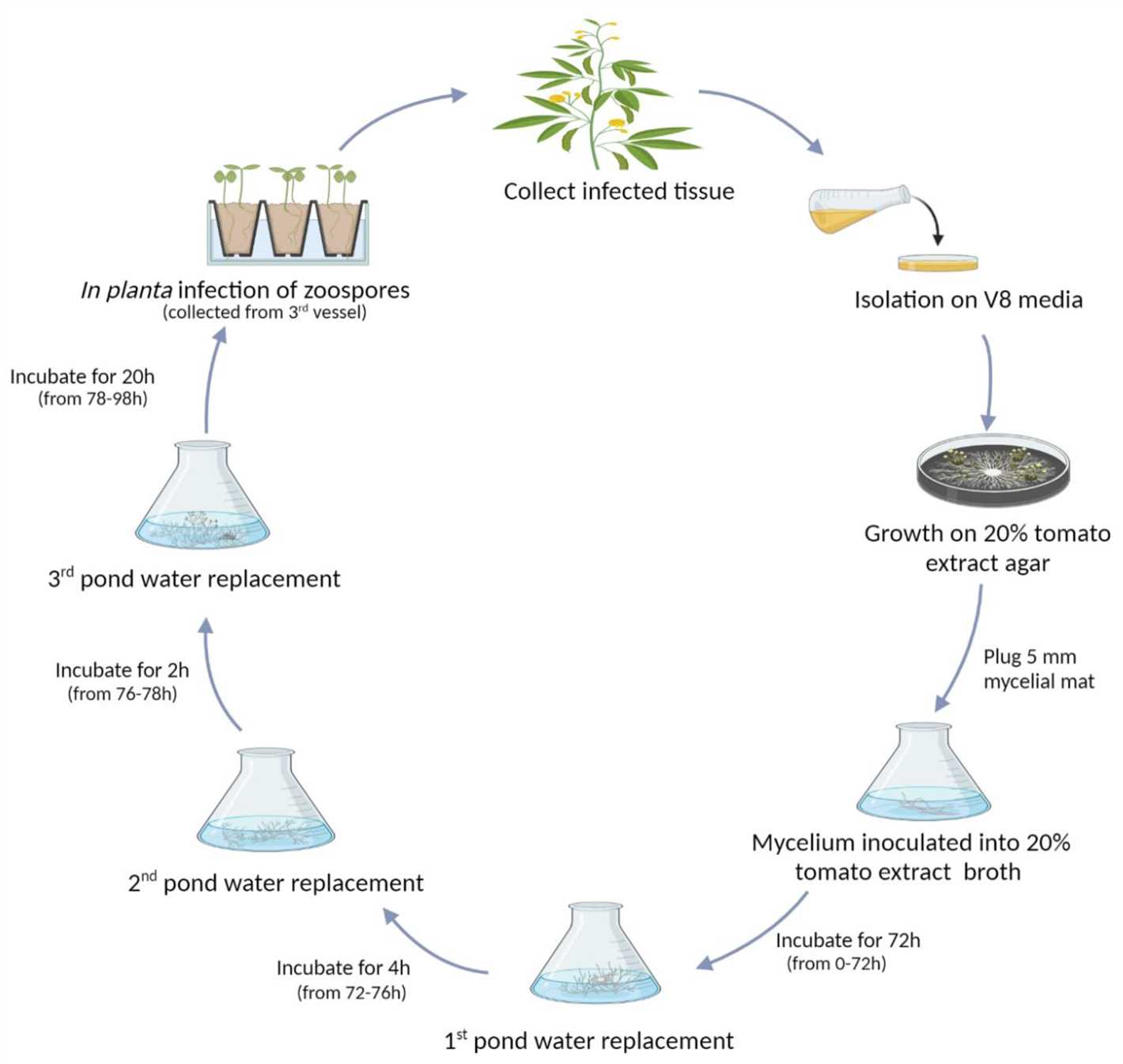
Fungicides are chemical compounds that can kill or inhibit the growth of fungi, including Phytophthora pathogens. They are usually applied as sprays or drenches to the plants and can provide an immediate control of the disease.
Some commonly used fungicides for Phytophthora control include:
- Phosphorous acid-based fungicides: These can inhibit the growth of Phytophthora and are highly effective in managing the disease. They are usually applied preventively or as soon as the symptoms appear.
- Metalaxyl-based fungicides: These are systemic fungicides that can be absorbed by the plant and provide long-lasting control. They are commonly used as a preventive measure in high-risk areas.
- Copper-based fungicides: These have both preventive and curative properties and are effective in controlling Phytophthora diseases. They can be used in organic farming systems.
Application Techniques
The effectiveness of chemical control depends not only on the choice of fungicide but also on the application technique. The following techniques can enhance the efficiency of chemical control:
- Timing: Applying fungicides at the right time is crucial for their effectiveness. They should be applied preventively, before the infection occurs or as soon as the symptoms appear.
- Complete coverage: To ensure the fungicide reaches all parts of the plant, it is important to apply it thoroughly and evenly. This can be achieved through proper spraying or drenching techniques.
- Rotation: Using different fungicides in rotation can help prevent the development of resistance in the pathogen. It is important to follow the recommended rotation schedules to maximize the effectiveness of chemical control.
- Adjuvants: Adding adjuvants to the fungicide solution can improve its efficacy. Adjuvants help the fungicide spread and adhere to the plant surfaces, increasing its effectiveness.
Limitations and Precautions
While chemical control can be highly effective in managing Phytophthora diseases, there are some limitations and precautions that need to be considered:
- Resistance development: Continuous use of the same fungicide can lead to the development of resistance in the pathogen. It is important to rotate different fungicides and follow the recommended practices to avoid resistance development.
- Environmental impact: Some fungicides can have negative impacts on the environment and non-target organisms. It is important to choose fungicides that are safe for the environment and follow the recommended application rates.
- Regulatory restrictions: Some fungicides may have regulatory restrictions on their use. It is important to be aware of the regulations in your region and follow them strictly.
| Fungicides | Application Technique | Limitations and Precautions |
|---|---|---|
| Phosphorous acid-based fungicides | Timing: preventive or early curative application | Resistance development, environmental impact |
| Metalaxyl-based fungicides | Timing: preventive application | Resistance development, regulatory restrictions |
| Copper-based fungicides | Complete coverage, rotation | Environmental impact, regulatory restrictions |
Biological Control
Biological control is a method of managing and preventing the spread of Phytophthora that involves the use of natural enemies, such as beneficial organisms or microorganisms, to control the population of the pathogen. This approach has gained popularity due to its effectiveness and low impact on the environment.
1. Introduction of antagonistic organisms
One strategy in biological control is the introduction of antagonistic organisms, which are natural enemies of Phytophthora. These organisms can compete with the pathogen for resources, inhibit its growth, or even kill it. Some examples of antagonistic organisms used for biological control of Phytophthora include certain strains of bacteria, fungi, and nematodes.
2. Development and use of biocontrol agents
Another approach is the development and use of biocontrol agents specifically designed to target Phytophthora. These agents are usually derived from naturally occurring microorganisms, such as bacteria or fungi, that have been selected for their ability to inhibit the growth and spread of the pathogen. They can be applied to plants as a preventive measure or as a treatment after infection.
3. Enhancing the population of natural enemies
Increasing the population of natural enemies of Phytophthora can also be an effective strategy in biological control. This can be achieved by providing suitable habitats, food sources, or even shelter for these organisms. For example, planting diverse plant species or incorporating organic matter into the soil can help create a conducive environment for beneficial organisms.
4. Cultural practices that promote biocontrol
Certain cultural practices can also promote biocontrol of Phytophthora. These practices include crop rotation, proper plant spacing, and the use of resistant or tolerant plant varieties. These techniques help reduce the pathogen’s opportunities for infection and spread, while also allowing beneficial organisms to thrive.
5. Integrated pest management
Biological control is often used as part of an integrated pest management (IPM) approach. IPM combines various strategies, including biological, cultural, and chemical control methods, to manage pests and diseases. By integrating biological control with other methods, such as the use of fungicides or improved plant nutrition, the efficacy of Phytophthora management can be significantly enhanced.
Overall, biological control offers a sustainable and environmentally friendly approach to combat Phytophthora. By harnessing the power of natural enemies and promoting beneficial organisms, it is possible to effectively manage the spread of this devastating pathogen.
“Question-Answer”
What is Phytophthora and why is it important to combat it?
Phytophthora is a group of plant pathogens that cause devastating diseases in a wide range of plants. It is important to combat Phytophthora because it can lead to significant economic losses in agriculture and horticulture industries, as well as ecological damage in natural ecosystems.
What are some effective methods to combat Phytophthora?
There are several effective methods to combat Phytophthora. These include implementing strict quarantine measures, using resistant plant varieties, practicing proper sanitation and hygiene in nurseries and gardens, employing biological controls, and applying fungicides.
How can strict quarantine measures help in combating Phytophthora?
Strict quarantine measures can help in combating Phytophthora by preventing the introduction and spread of infected plants and plant materials. This can be achieved through inspection and certification processes, as well as the establishment of restricted zones and regulations on plant movement.
What are resistant plant varieties and how do they combat Phytophthora?
Resistant plant varieties are plants that have a natural ability to withstand or tolerate infection by Phytophthora. They combat Phytophthora by limiting the pathogen’s ability to infect and reproduce within the plant, thereby reducing disease severity and preventing its spread to other plants.
How can proper sanitation and hygiene practices help in combating Phytophthora?
Proper sanitation and hygiene practices, such as regular cleaning and disinfection of tools, equipment, and surfaces, can help in combating Phytophthora by reducing the chances of pathogen transmission. This can prevent the introduction and spread of the pathogen in nurseries, gardens, and other growing areas.
What are biological controls and how do they combat Phytophthora?
Biological controls are natural enemies or organisms that can suppress the growth and multiplication of Phytophthora. These include beneficial microbes, such as certain bacteria and fungi, as well as predatory or parasitic organisms, such as nematodes and insects. They combat Phytophthora by directly attacking and inhibiting the pathogen, or by enhancing the plant’s natural defense mechanisms.
How do fungicides help in combating Phytophthora?
Fungicides are chemical compounds that can control or kill Phytophthora. They help in combating Phytophthora by inhibiting the growth and development of the pathogen, thus reducing disease severity and preventing its spread. However, the use of fungicides should be integrated with other management strategies to achieve long-term effectiveness and minimize the development of resistance.







